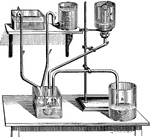Clipart tagged: ‘Siphon’

Iphigenia Brasiliensis - Sinupalliate Right Valve
"Having a sinuous pallial margin and consequent sinuous impression on the shell along the line of attachment…

Egyptian Bellows
"Among the remarkable inventions of a remote era, may be mentioned bellows and siphons. The former were…

Bivalve Mollusk
"Shell of a Bivalve Mollusk, inner surface. ad.a., depression showing the attachment of the anterior…

Tantalus's Cup
"Whenever liquid reaches the bottom of the short leg on the siphon inside the cup, the liquid is discharged…
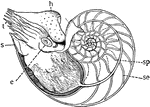
Pearly Nautilus
"Pearly Nautilus. e, eye; h, hood, a muscular portion of the foot which protects the softer parts; s,…

Hand Operated Pump
One sort of pump once common worldwide was a hand-powered water pump over a water well where people…

Red Whelk
Fusus antiquus. "...a division of prosobranchiate gastropods, having the lip of the shell notched, canaliculate,…
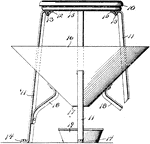
Roost Funnel
There are many different kinds of funnels that have been adapted for specialized applications in the…

Siphon
A bent tube with limbs of unequal length, used for drawing liquids from one vessel into another.

Siphon
"The action of the siphon illustrates the effect of atmospheric pressure. It is simply a bent tube having…

Siphon
"A bent tube with one limb longer than the other, by means of which a liquid can be drawn off to a lower…
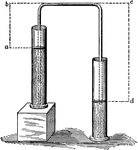
Siphon
"The vertical distance form the level of the upper liquid to the highest point of the tube (ab) is the…
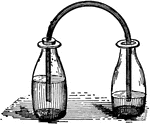
Bottle Siphon
"Partly fill two bottles with water. Connect them by a bent tube that fits closely into the mouth of…

The Siphon
"A siphon is used to draw off liquids from a higher elevation to a lower one. The siphon uses the vacuum…
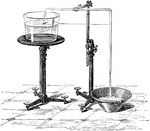
Siphon
The siphon is an instrument in which a liquid, under the combined action of its own weight and atmospheric…

Siphon
A siphon (also spelled syphon) is a continuous tube that allows liquid to drain from a reservoir through…
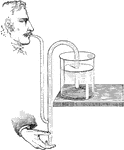
Starting the Siphon
A Siphon can be started by inserting one end of a tube in the liquid and sucking at the other end. It…

Water Closet Cistern
A siphon discharge cistern is provided in which the cistern can be discharged either partially or fully…



